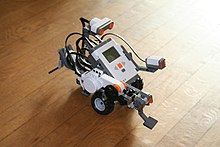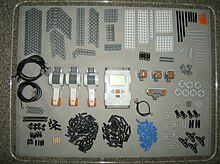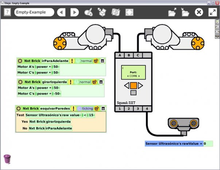
Lego Mindstorms is a discontinued hardware and software structure which develops programmable robots based on Lego bricks.
leJOS is a firmware replacement for Lego Mindstorms programmable bricks. Different variants of the software support the original Robotics Invention System, the NXT, and the EV3. It includes a Java virtual machine, which allows Lego Mindstorms robots to be programmed in the Java programming language. It also includes 'iCommand.jar' which allows you to communicate via bluetooth with the original firmware of the Mindstorm. It is often used for teaching Java to first-year computer science students. The leJOS-based robot Jitter flew around on the International Space Station in December 2001.

The FIRST LEGO League Challenge is an international competition organized by FIRST for elementary and middle school students.
BrickOS is an open-source operating system created by Markus Noga as firmware to operate as an alternative software environment for the Lego Mindstorms Robotic Invention System. BrickOS is the first open-source software made for Lego Mindstorms robots. It allows development using the C, C++, and Java programming languages. Programs are cross compiled using the g++ and Jack compilers, with the toolchain targeting the Hitachi H8 architecture used in Mindstorms devices.
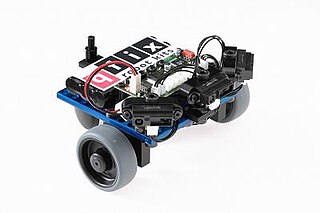
Qfix robot kits are an education tool for teaching robotics. They are used in schools, high schools and mechatronics training in companies. The robot kits are also used by hobby robot builders. The qfix kits are often found in the RoboCup Junior competition where soccer robots are built of the kit's components.
Next Byte Codes (NBC) is a simple language with an assembly language syntax that can be used to program Lego Mindstorms NXT programmable bricks. The command line compiler outputs NXT compatible machine code, and is supported on Windows, Mac OS and Linux. It is maintained by John Hansen, a Mindstorms Developer Program member.
DialogOS is a graphical programming environment to design computer system which can converse through voice with the user. Dialogs are clicked together in a Flowchart. DialogOS includes bindings to control Lego Mindstorms robots by voice and has bindings to SQL databases, as well as a generic plugin architecture to integrate with other types of backends.
Not eXactly C, or NXC, is a high-level programming language for Lego Mindstorms NXT designed by John Hansen in 2006. NXC, which is short for Not eXactly C, is based on Next Byte Codes, an assembly language. NXC has a syntax like C. The IDE for NXC is the Bricx Command Center.
Lego Education is a Lego theme designed specifically for schools that concentrates sets that can be used by education institutions and includes sets that focus on Duplo and Technic themes and contain larger amounts of pieces. The theme was first introduced in 1999.
The World Robot Olympiad (WRO) is a global robotics competition for young people. The World Robot Olympiad competition uses Lego Mindstorms manufactured by LEGO Education. First held in 2004 in Singapore, it now attracts more than 28,000 teams from more than 85 countries.

Bricx Command Center (BricxCC) is the integrated development environment (IDE) of Next Byte Codes (NBC), Not Quite C (NQC) and Not eXactly C (NXC). These programming languages are used to program the Robots in the Lego Mindstorms series. Not Quite C and Not eXactly C have a syntax like C. Bricx Command Center is currently limited to computers running the Microsoft Windows operating system. However, a version for the Linux operating system is currently in development. It is written by John Hansen.

For Inspiration and Recognition of Science and Technology (FIRST) is an international youth organization that operates the FIRST Robotics Competition, FIRST LEGO League Challenge, FIRST LEGO League Explore, FIRST LEGO League Discover, and FIRST Tech Challenge competitions. Founded by Dean Kamen and Woodie Flowers in 1989, its expressed goal is to develop ways to inspire students in engineering and technology fields. Its philosophy is expressed by the organization as Coopertition and Gracious Professionalism. FIRST also operates FIRST Place, a research facility at FIRST Headquarters in Manchester, New Hampshire, where it holds educational programs and day camps for students and teachers.
Dexter Industries is a company that designs robots for education, research, and personal use. The company makes several products that expand the LEGO Mindstorms, Raspberry Pi, and Arduino prototype systems.
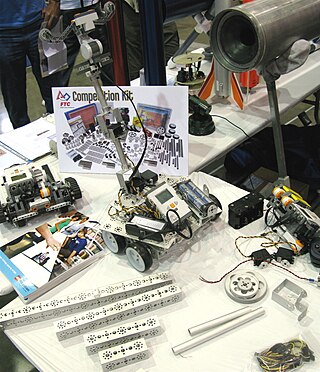
TETRIX Robotics consists of two robotic kits by Pitsco Education. The two sets are the TETRIX MAX building system and the TETRIX PRIME building system. They are intended to be used as educational robotics and for competitions such as the FIRST Tech Challenge.
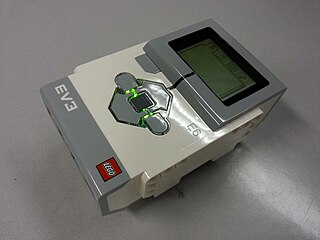
LEGO Mindstorms EV3 is the third generation robotics kit in LEGO's Mindstorms line. It is the successor to the second generation LEGO Mindstorms NXT kit. The "EV" designation refers to the "evolution" of the Mindstorms product line. "3" refers to the fact that it is the third generation of computer modules - first was the RCX and the second is the NXT. It was officially announced on January 4, 2013, and was released in stores on September 1, 2013. The education edition was released on August 1, 2013. There are many competitions using this set, including the FIRST LEGO League Challenge and the World Robot Olympiad, sponsored by LEGO.
Open Roberta is a project within the German education initiative "Roberta – Learning with robots", initiated by Fraunhofer IAIS, which is an institute belonging to the Fraunhofer Society. With Open Roberta Fraunhofer IAIS is looking to encourage children to code by using robots such as Lego Mindstorms, and other programmable hardware systems such as Arduino, BBC micro:bit, and the Calliope mini. The Cloud-approach of the Open Roberta Lab is intended to simplify programming concepts and make it easier for teachers and schools to teach how to code. Open Roberta is free and does not require any installation. The project was initially founded with €1m by Google.org. Users from up to 120 countries now access the platform.
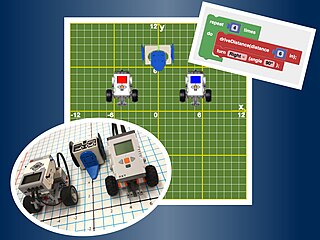
RoboBlockly is a web-based robot simulation environment for learning coding and math. Based on Blockly, it uses a simple puzzle-piece interface to program virtual Linkbot, Lego Mindstorms NXT and EV3, as well as to draw and animate for beginners to learn robotics, coding, math, science, and art. Blocks in RoboBlockly can be executed in debug mode step-by-step. All math activities in RoboBlockly are Common Core State Standards Mathematics compliant.
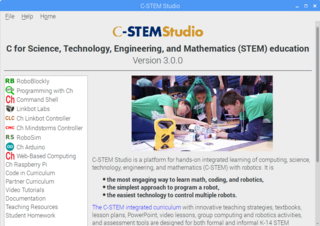
C-STEM Studio is a platform for hands-on integrated learning of computing, science, technology, engineering, and mathematics (C-STEM) with robotics. It can be used to control multiple Linkbot, Lego Mindstorms NXT and EV3, Arduino boards.

